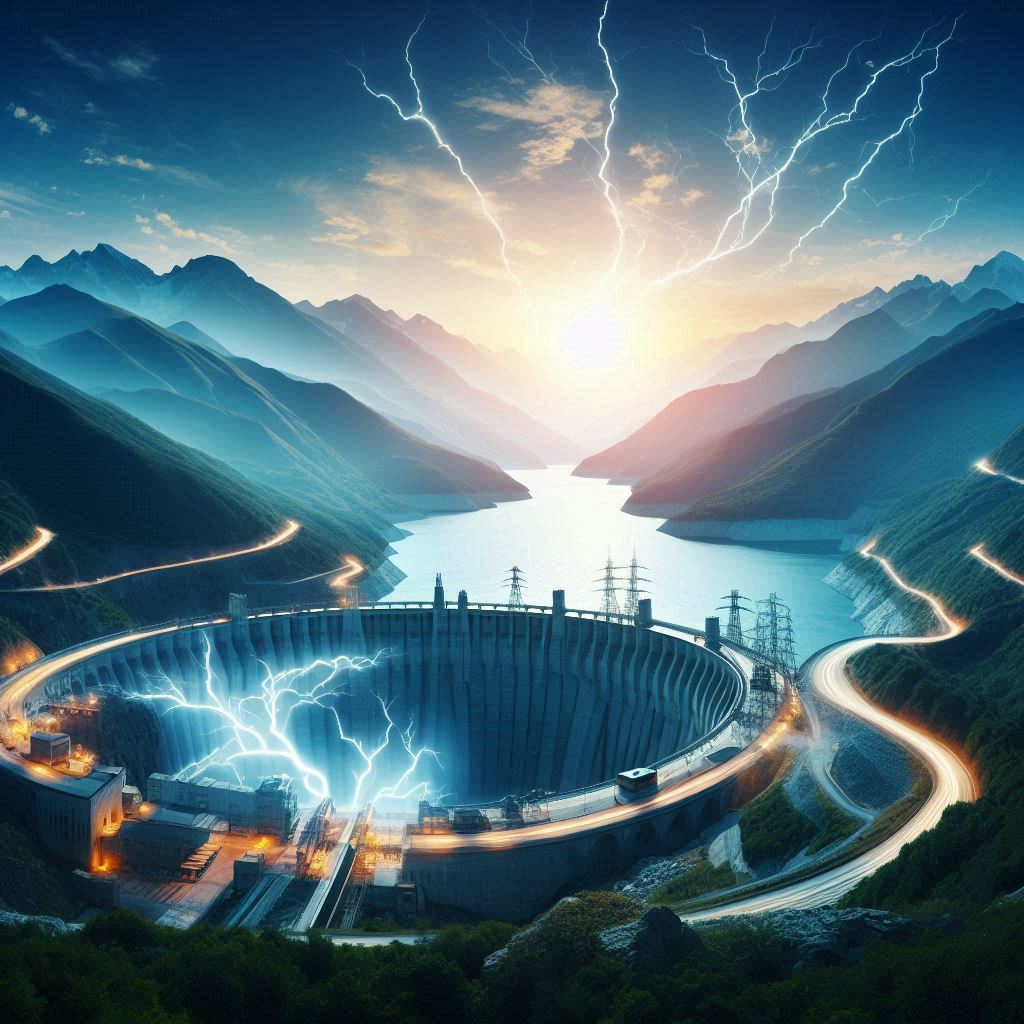Hydropower is proof that water can also get busy: a river never rests, not even at night!
The energy of water
Although we use modern turbines and generators today, the idea of harnessing the power of water to generate energy goes back thousands of years. The ancient Greeks used water wheels to grind grain.
Hydropower simply harnesses the power of moving water to generate energy, transforming it first into mechanical energy through turbines and then into electricity through generators.
Water is the real protagonist: when it is collected in a basin and allowed to flow downwards, it accumulates energy that can be harnessed.
Higher the fall, the more energy can be generated.
The moving water turns turbines, which in turn activate electric generators. The result? Clean energy ready to power homes, industries and cities!
In 1895, the Edward Dean Adams Power Plant was built at Niagara Falls, becoming the first high-capacity hydroelectric plant.
This event marked an epochal turning point, demonstrating how the power of water could power entire cities.
Thanks to this insight, hydropower is now one of the most reliable renewable sources, covering about 17% of global electricity needs.
The reason is simple: it is a stable source, easily manageable and capable of storing energy for times of greatest demand.
Unlike solar and wind power, hydropower can provide energy in a stable and constant manner, day and night, regardless of weather conditions.
From the river to the power grid
Each hydropower plant uses water in a different way to generate energy, adapting to the terrain and energy needs.
Reservoir power stations use large dams to collect and gradually release water, ensuring stable and constant production.
Pumped storage units, on the other hand, work like natural batteries: they pump water up when demand is low and release it at peak times to produce electricity.
Flowing water power plants directly exploit the flow of rivers, without large reservoirs, but their production can vary according to climatic conditions.
Behind the operation of a power plant there are several essential technologies: dams regulate the flow of water and allow energy storage; turbines transform the kinetic energy of water into mechanical energy; generators convert this movement into electricity ready to be distributed in the grid; finally, regulation systems optimise the use of water to ensure efficiency and reduce waste.
To increase efficiency, one can increase the height of the hydraulic head, ensure a constant flow of water and invest in technological innovations, such as state-of-the-art turbines and advanced materials.
Hydroelectricity, balancing energy and nature
Large dams can change the course of rivers and affect the lives of animals living in them.
For example, some fish, such as salmon, need to migrate along rivers, but the presence of weirs can make their journey complicated.
To help them, fish ladders and special passages are being developed to allow them to continue their journey without any problems.
In addition to this, artificially regulating water flow can affect water quality and bank erosion.
Many hydropower plants are also adopting controlled water release systems that ensure minimal impact on the environment.
Hydropower is a clean resource that helps reduce CO₂ emissions, contributing to healthier air and combating global warming.
Technologies are improving, with increasingly high-performance turbines and the expansion of small hydropower plants, which provide energy to remote communities with minimal impact on the environment.
Furthermore, hydropower integrates perfectly with solar and wind power, creating a stable and reliable energy mix.
Play for the planet!

